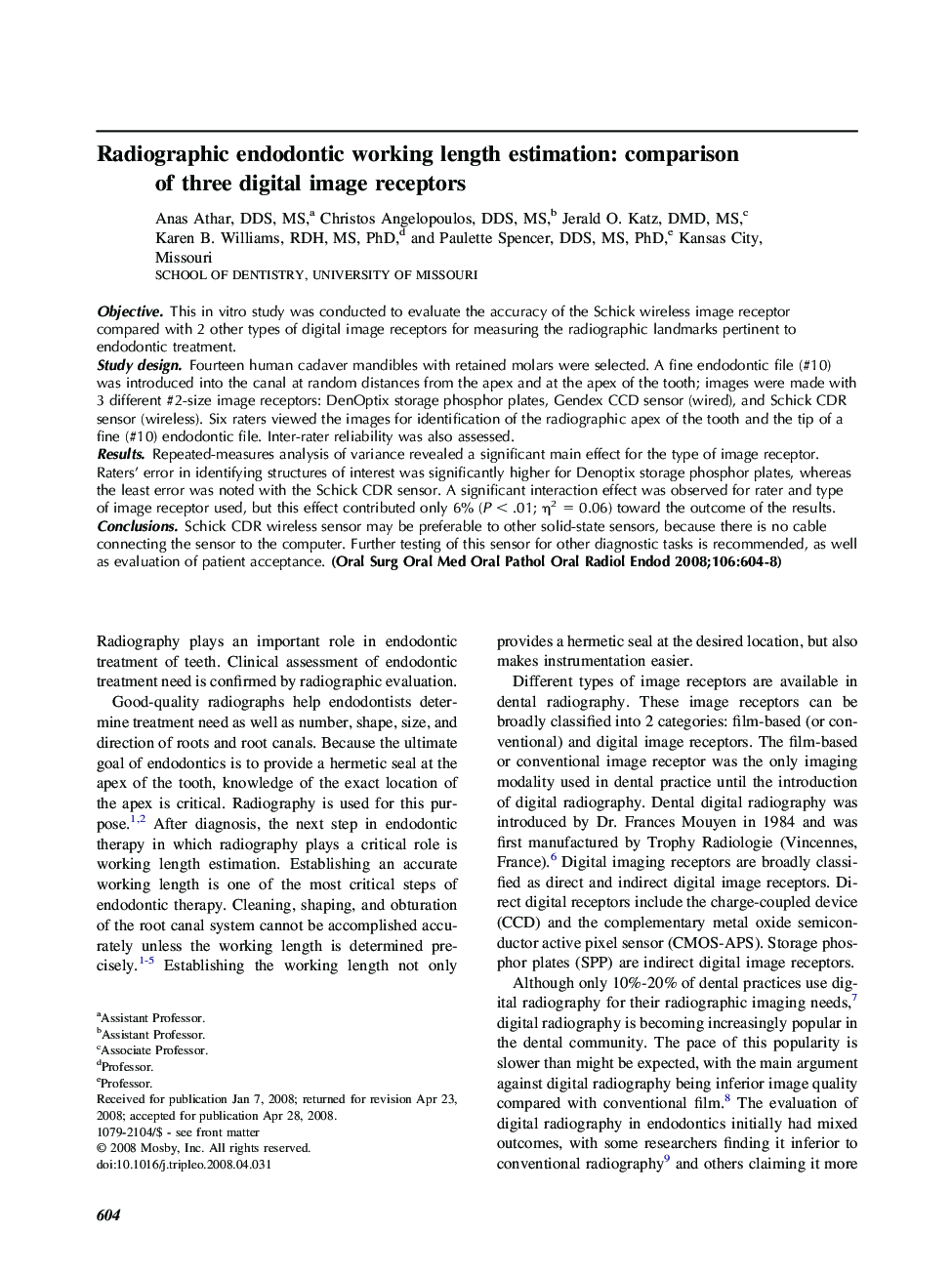| Article ID | Journal | Published Year | Pages | File Type |
|---|---|---|---|---|
| 3168779 | Oral Surgery, Oral Medicine, Oral Pathology, Oral Radiology, and Endodontology | 2008 | 5 Pages |
ObjectiveThis in vitro study was conducted to evaluate the accuracy of the Schick wireless image receptor compared with 2 other types of digital image receptors for measuring the radiographic landmarks pertinent to endodontic treatment.Study designFourteen human cadaver mandibles with retained molars were selected. A fine endodontic file (#10) was introduced into the canal at random distances from the apex and at the apex of the tooth; images were made with 3 different #2-size image receptors: DenOptix storage phosphor plates, Gendex CCD sensor (wired), and Schick CDR sensor (wireless). Six raters viewed the images for identification of the radiographic apex of the tooth and the tip of a fine (#10) endodontic file. Inter-rater reliability was also assessed.ResultsRepeated-measures analysis of variance revealed a significant main effect for the type of image receptor. Raters' error in identifying structures of interest was significantly higher for Denoptix storage phosphor plates, whereas the least error was noted with the Schick CDR sensor. A significant interaction effect was observed for rater and type of image receptor used, but this effect contributed only 6% (P < .01; η2 = 0.06) toward the outcome of the results.ConclusionsSchick CDR wireless sensor may be preferable to other solid-state sensors, because there is no cable connecting the sensor to the computer. Further testing of this sensor for other diagnostic tasks is recommended, as well as evaluation of patient acceptance.
